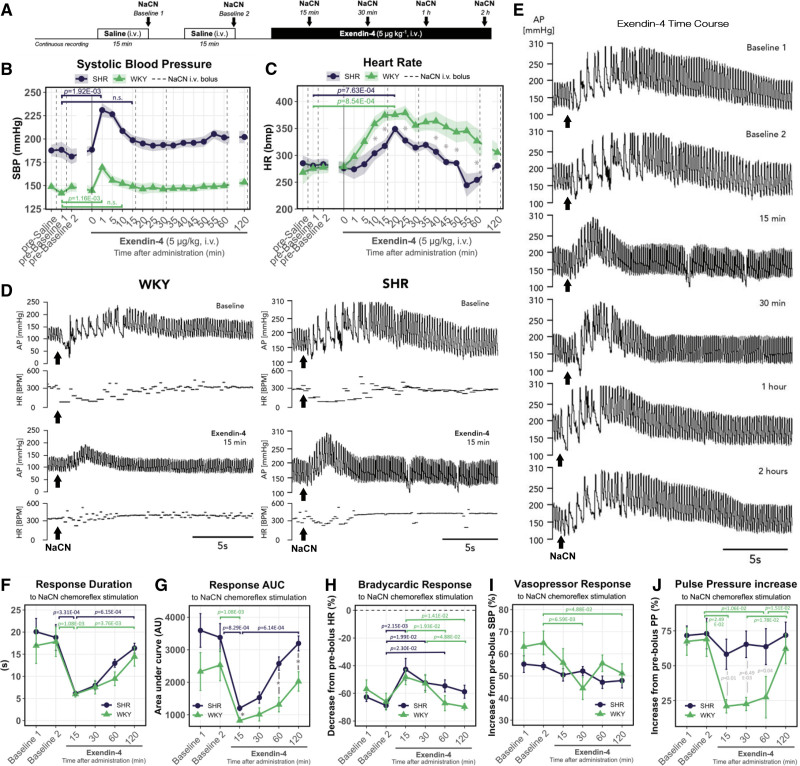Figure 4.
Systemic GLP1 (glucagon-like peptide 1) receptor activation suppresses chemoreflex-evoked arterial BP response in vivo. A, Experimental protocol for testing peripheral chemosensitivity in vivo. B, Resting systolic BP and (C) HR responses to Exendin-4 (5 µg kg−1, IV) administration. Dotted lines indicate chemoreflex stimulus (NaCN). Solid line indicates Exendin-4 administration. D, Representative traces of chemoreflex-evoked BP and HR responses before and 15 min after Exendin-4 administration in SH and WKY rats. Traces for SH and WKY are shown on different scales to highlight the chemoreflex-evoked responses in normotensive conditions. Representative traces selected to best match the average values across all animals in each group as shown in F–J. E, Representative time-course traces of chemoreflex-evoked BP responses following Exendin-4 administration. Representative traces of this specific SH rat selected to best match the average values across all animals as shown in F and G. F, Changes in chemoreflex-evoked BP response duration and (G) area under curve following Exendin-4 administration. Exendin-4 effect on chemoreflex-evoked (H) bradycardic, (I) vasopressor, and (J) pulse pressure (PP) increase responses. Bradycardic response (H) measured as the maximum drop in HR in response to chemoreflex stimulation (NaCN). Values expressed as percentage decrease compared with average HR prior the chemoreflex stimulation. Pressor response I measured same as H but for maximum increase in systolic BP. PP response J measured same as H but for maximum increase in PP during the post-peak period of the pressor response (devoid of bradycardic episodes). Kruskal-Wallis, Dunn’s post hoc test with Bonferroni correction. n=6. Mean±SEM. Arrows indicate NaCN bolus. *P<0.05.

